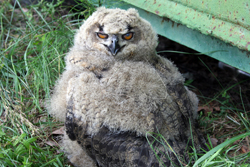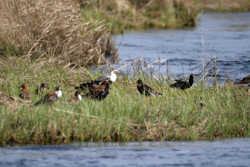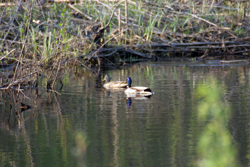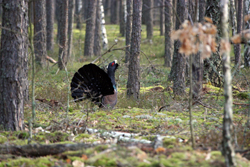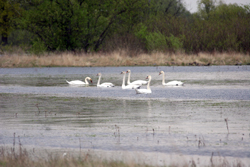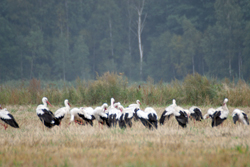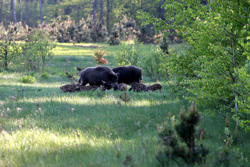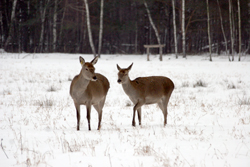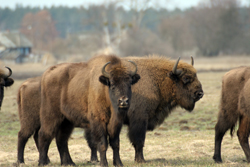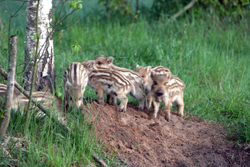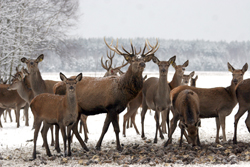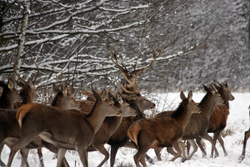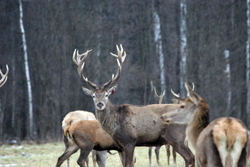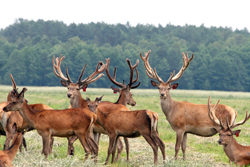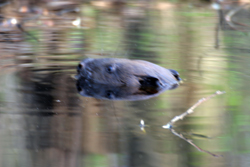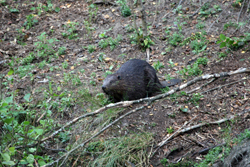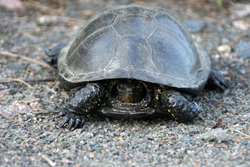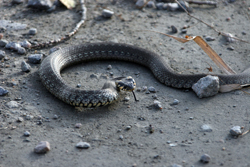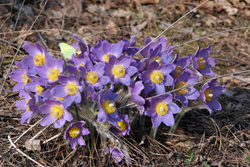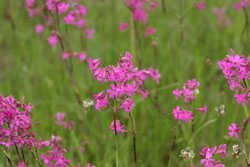Tourism
The rich natural heritage of the National Park attracts many ecotourists here, whose curiosity and interest is based on observing species in the wild.
According to Western tour operators, the Pripyatsky National Park is a corner of European nature, which has no analogues in the world. They say the Pripyatsky National Park can compete freely with the famous US Everglades National Parks in Florida. It is really difficult to collect in one place such a volume of the exclusivity of the diversity of animals, birds, plants of meadows, forests, swamps and reservoirs, which is available in our park..
National Park "Pripyatsky" is located in the center of the boggy Polesye lowland, which is sometimes called the "lungs" of Europe. This is the kingdom of the water surface, floodplain meadows, oak groves and forests, this is a real paradise for bird watchers and just bird lovers.
Five years ago, the Pripyatsky National Park for the development of ecotourism received a recommendation from Western tour operators - David Kent, a GGW company (England) with access to the western market, with a reference to this company. The national park was visited by tourists from England, Italy, Germany, Holland, Belgium, France and other countries.
To meet the expectations of ecotourists, in the National Park, a lot of work is being done to ensure the quality of tours and guaranteed observation of species: identifying habitats and concentration of wild animals, mapping settlements, studying trace activity. Behavior, biology, ecology of species, methods of attracting animals and birds are used, which allows you to see 120-140 species of birds during a 10-day ecological tour in the spring.
A preliminary schedule for the arrival of groups in the directions: ornithological, botanical, approximately, and the tour programs - five-day, seven-day, ten-day.
Each participant is provided with a tour program, brochures on the state of populations and ecology of rare species. For observations, water, pedestrian, car routes, ambushes, towers with the possibility of photographing wildlife objects are used.
If we talk about the people living in the territory of the national park, we must first of all remember such qualities as simplicity, kindness and hospitality, hard work, which have always distinguished the ancestors of the Poleshuk peasants who have long lived in this territory.
The skill of the Poleshuk grew from year to year. He learned the necessary skills of working life, mastered carpentry and joinery, learned to weave from bark and birch bark, forge in a smithy, make sheepskin and skins of fur animals. In the summer, in the morning, I checked traps for fish, mowed hay, beamed, drove tar and tar, in the evening I was engaged in repairing and making various household utensils. In winter he hunted for upland birds and beasts, and in the evening he forked ropes, knitted nets, made samotovs, boxes, dishes, sewed, embroidered, sang songs. Therefore, a significant variety is introduced into the tour program by visiting the village and getting to know the life and traditions of the local population, with Belarusian cuisine, crafts. Here live people who have managed to preserve traditions and rituals to our times, which are passed down from generation to generation.
Ecotourists are also invited to visit places of historical and cultural heritage in the ancient city of Turov, where tourists will plunge into the legends and legends associated with the amazing past of Turov, listen to the performance of the folklore group "Moloditsy Moloditsy", which includes the workers of the park. This group glorifies the beauty of the Belarusian Polesye in their work.
In memory of meeting us, you can buy souvenirs made of ceramics, vines, straws, glass, wood in the shop of the national park, which will once again remind you of the amazing journey through the Pripyatsky National Park.
Environmentalists are also given the opportunity to meet with scientists to watch videos about nature.
The Department of Tourism of the National Park provides visa support, transfer services to the airport and for territorial excursion routes, and organizes road lunches as needed.
Ecotourism
Located 250 km from Minsk, the Pripyatsky National Park stretches along the Pripyat River, stretching for approximately 45 km along its meandering course, and covers an area of 188485 hectares. The administrative department of the national park "Pripyatsky" is located in the settlement Lyaskovichi, located on the banks of the Pripyat.
The history of the formation of landscapes in this area, associated with the Ice Age, determined their extraordinary diversity (10 typological landscape structures). During a spring flood, the water level rises to 4 meters, causing spills that can extend for many kilometers, flooding floodplain forests and meadows, old lakes, forming an endless blue expanse of water
Forests cover about 146,000 hectares of the national park. More than half of them are pine. An interesting combination of birch, ash and hornbeam is found in deciduous groves, even maple and linden forests have survived. Many of them, very old and untouched, are the hosts of an amazing variety of wild life..
Of the whole variety of forest natural complexes of the park, floodplain forests are of particular interest and attractiveness. They were formed under conditions of constant flooding with flood waters and, in their structure and composition, are unique for the entire East European Plain. Many old hollow trees give shelter to many species of animals and birds, among which the permanent inhabitants are owls, white-tailed eagles, great and lesser spotted eagles, black storks. Thanks to the richest food base under the canopy of 100 - 180-year-old oak forests, a myriad of wild boars are in charge.
Squeezed by trees and bordered by bushes of floodplain forests in the Pripyat floodplain, there are numerous narrow and long shallow oxbow lakes. During floods and floods, these lakes are connected by channels with Pripyat.
There are four functional zones on the territory of the national park. The most important is the central area, which includes a large swamp sector with mineral hills. Rising above a sea of moss, these islets are home to many endangered predators. All life forms are strictly guarded in this area, only scientific activity and control are allowed here. The protected area is surrounded by a zone of regulated use, where a protection regime has also been established, although the restrictions on access are not so strict - for example, picking mushrooms and berries by the local population, sanitary felling, cattle grazing, tourism, etc. However, the use of natural resources is strictly limited. In the northern part of the park, there are sections of the recreational zone intended for tourism, recreation and health improvement. The park is surrounded by an area that mitigates the impact of human activities outside the protected areas. Economic activities within the framework of agriculture and forestry are permitted in this zone, and their methods are strictly compatible with environmental interests. Agriculture is completely systematized.
The main factor determining the content of the Pripyatsky National Park's wildlife is the indomitable force of annual floods, which create many regional difficulties or the inability to access biotopes for most of the year, and therefore limit the degree of harmful effects of human activity.
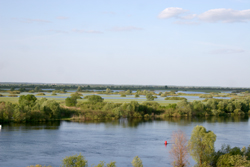
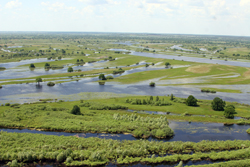
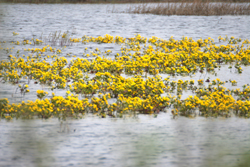
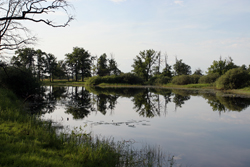
On the territory of the Pripyatsky National Park, 254 species of birds are registered (193 nest, 45 are migrants, 16 are vagrants), which is about 80% of the entire avifauna of Belarus. 65 species are included in the Red Book of Belarus. These are impressive numbers for a region that covers less than 1% of the country's area.
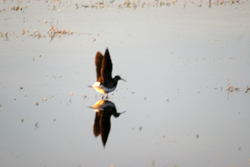
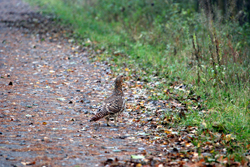
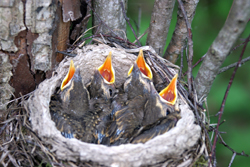
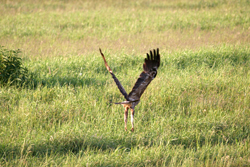
During spring floods, the heights of floodplain meadows over the Pripyat flood are used by migratory birds as places of rest, feeding, and mating games. Some couples even have offspring. The air is filled with melodic cries of birds, the murmur of water, the pleasant smell of flood. Particularly beautiful are the outfits of drakes: mallards, wiggles, broad noses, pintails, ducks and diving. They do not lag behind them in the spectacular decoration of sandpipers-turukhtans, which form in these places the largest migratory cluster in all of Europe. Mating tournaments of lively male turukhtans, sporting chic collars, last on the floodplain islets for weeks. Voiced and swift-winged herbalists, lapwings and terns proclaim their "wedding" trills.
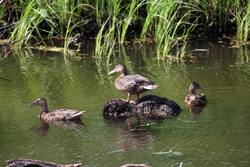
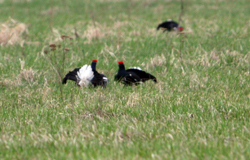
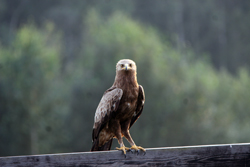
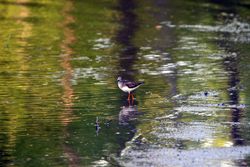
Although the Pripyatsky National Park is predominantly characterized by floodplain bird species, forest life is also rich and varied. It is easy to locate and observe wood grouses and black grouses. In the park, about 20 grouse currents have been registered, numbering in some cases up to 40 individuals. All species of woodpeckers of the country (10) nest here plus nine species of owls (including the owl and the great gray owl). In spring, literally all forests, fields and meadows are filled with birdsong. You can hear the pied flycatcher, white-collar flycatcher and small flycatcher, bluethroat, oriole, grosbeak. Hoopoe and warbler are commonly seen around villages, while meadow harrier, crane and gray shrike can only be found outdoors. Huge areas of cranberry-covered bogs also attract birds. Black grouse, wood grouse, cranes and others nest here.
More than 50 species of mammals live in the Pripyatsky National Park. A herd of European bison in the Pripyatsky National Park is easier to spot than in any other national park in Eastern Europe in the autumn-winter period. These animals were brought here in 1987 and now their number exceeds a hundred.
The habitat of bison is limited by vital factors and hydrological barriers with the impossibility of observation in the summer. There are about 750 elks, many wild boars, roe deer.
Since 1996, the reindeer population has been restored. The European beaver is quite common, which adorns the landscape of the park with babbling dams..
Carnivores include wolves, lynxes, foxes, raccoon dogs, badgers, otters, martens, American and European mink, ferret, weasel, ermine, desman. Although not easy to see, it is not surprising to see wolves during the daytime, and fresh footprints can be seen almost everywhere. It is very easy to spot the beaver and muskrat, often at a very close distance during nighttime headlamp excursions.
All types of reptiles and amphibians of Belarus can be found on the territory of the park, which is not surprising due to hundreds of small water bodies. The most common are the viper, lake and pond frog, in dry places - a quick lizard, in a swamp - viviparous. Such a rare species as the crested newt, reed toad, copperhead, and marsh turtle are widespread. A friendly choir of various amphibians fills the expanses of the Pripyat and its tributaries with sounds.
The species composition of butterflies is also quite diverse. There are swallowtail, cabbage white, dawn, white pea, lemongrass, day peacock, large forest nacre, variegated winged worm and others.
The unique biotope complexes that characterize the Pripyatsky National Park are inevitably a characteristic feature of the rich and varied flora. 929 plant species have been registered. Along the river, Siberian irises add a splash of the blueness of coastal vegetation, on rich chernozems there is a mixture of oak and buttercup anemone, leafless and Siberian irises, various types of orchids, and noble copses. On the outskirts of the bogs, there are powerful thickets of blueberries and wild rosemary.
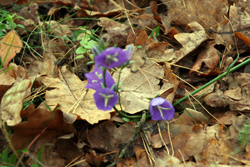
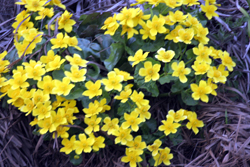
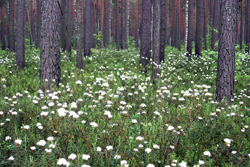
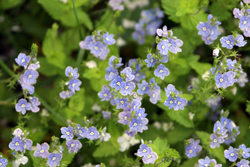




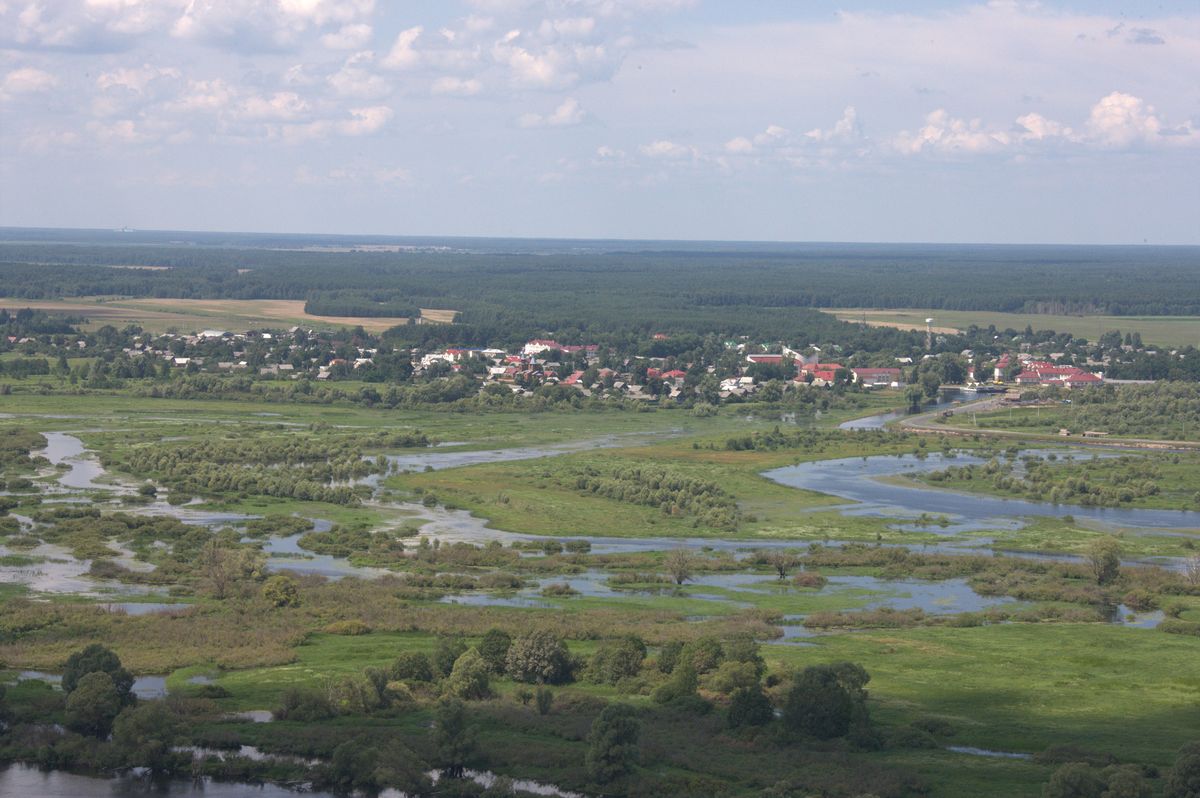

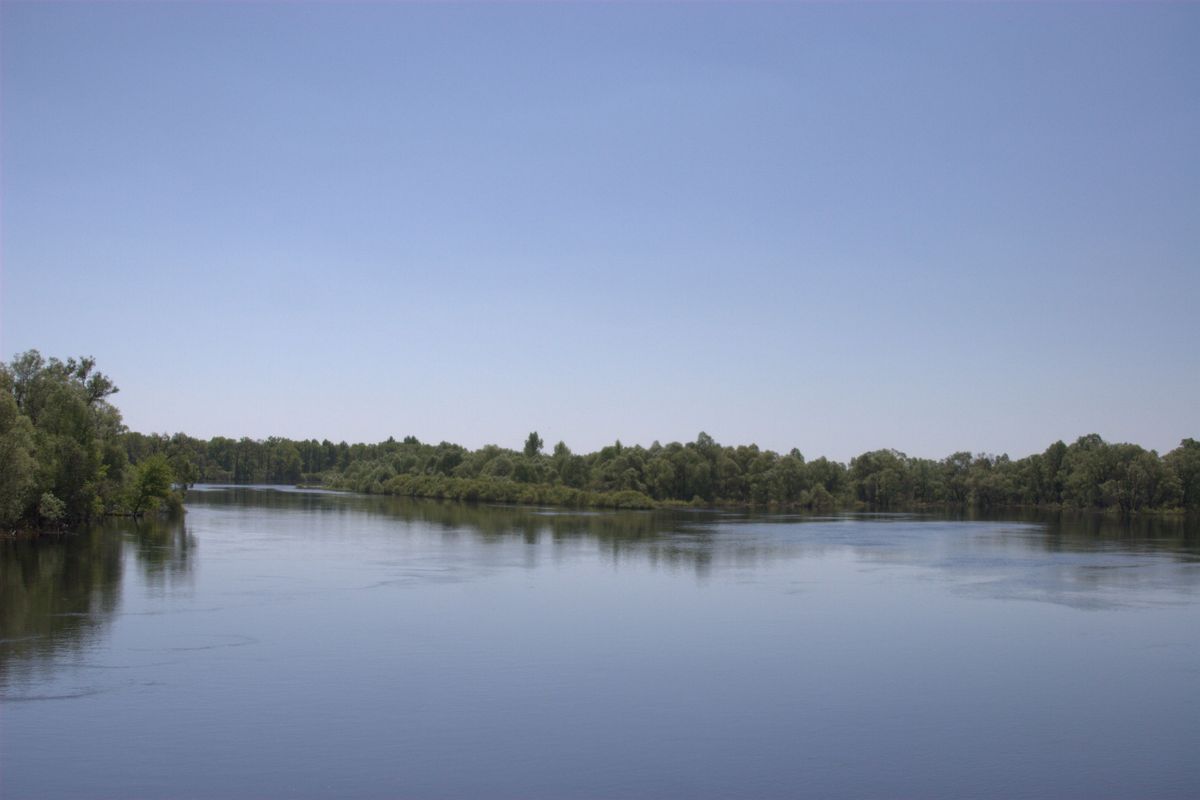
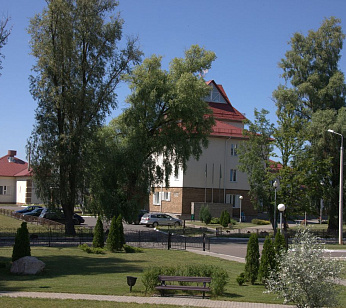
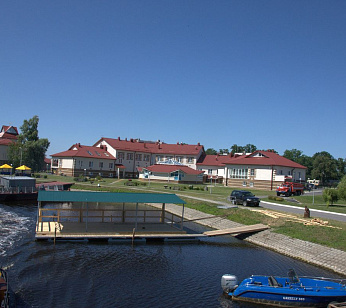
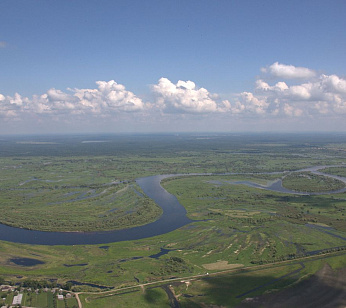
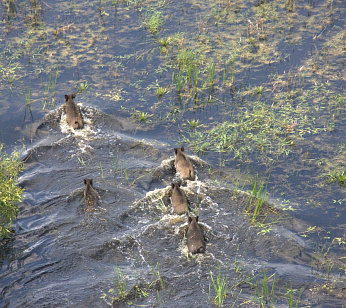




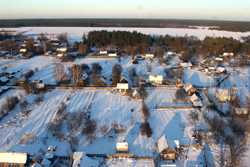
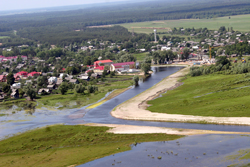
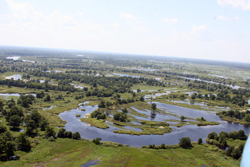
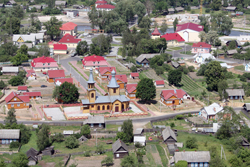
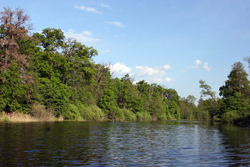
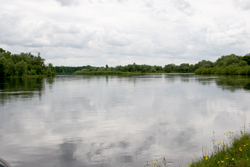
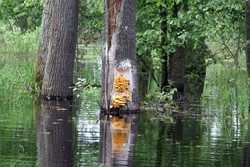
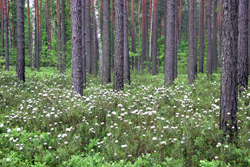
.jpg)
.jpg)
